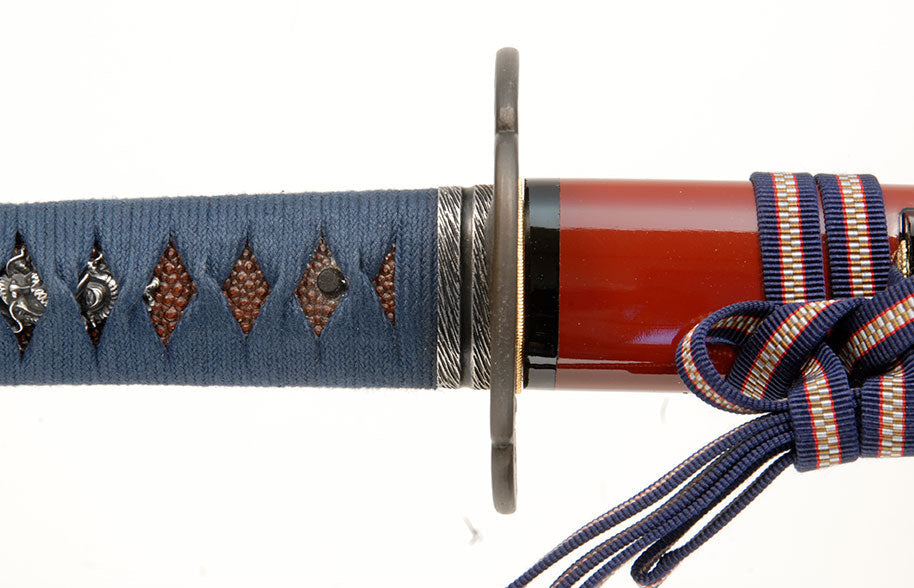What is Koshirae?
Japanese swords can be roughly divided into two types: Tachi and Uchi-gatana.
Aikuchi Koshirae

This is a type of sword without a tsuba and is made so that the mouth of the saya and the fuchigane of the hilt fit together perfectly. This is most often seen on tanto.
Nomiguchi Koshirae
This is a type of "Aikuchi Koshirae" that has no tsuba and the mouth of the scabbard overlaps the fuchigane of the tsuka. This type of koshirae is seen in Ezo Koshirae and late Edo period tanto.
Uchi-gatana Koshirae

A generic term for a typical Japanese sword dressing that could be used in battle. In addition to the common black lacquering, beautiful saya lacquering such as Kinnashiji (gold nashiji) or Aogai Mijin-nuri (crushed blue mother of pearl inlay lacquering) was applied. The number of decorative metal fittings would also increase.
Handachi Koshirae

Handachi literally means a “half tachi.” This type of fitting style was popular from the late Muromachi period to the early Edo period and is also known as "Chu Handachi style.” It is thought that this style came about during the transition between tachi and the uchi-gatana style.
Tensho Koshirae

This style appeared during the Warring States period when practicality was demanded. It is characterized by its simplicity, functionality, and robustness. Generally, the handle is wrapped in leather and the scabbard is lacquered in black.
Yagyu Koshirae

This is a type of Owari Koshirae, a style specialized for the Yagyu school of swordsmanship. It is characterized by the reversed position of the menuki.
Satsuma Koshirae

This Koshirae follows the Satsuma Jigen-ryu style of swordsmanship, and is characterized by its shallow curvature, thick scabbard, and unique kaerizuno. The tsuba is small compared to the overall size of the sword. There is also a hole drilled in the tsuba so that the tsuka can be tied on with a string to prevent it from falling out. This is a reminder not to be too hasty in drawing your sword.
Higo Koshirae

Hosokawa Tadaoki adopted the aesthetic sense used in the tea ceremony, which he learned from his master, Sen no Rikyu, in this exterior style. It is characterized by its austere taste, using tsuba, menuki, and fuchi-gashira made by craftsmen who lived in the Higo region. Since Tadaoki excelled at quick sword drawing, the overall blade length is short.
Shonai Koshirae
This is an attractive, martial, and earthy-fitting style, and uses the fitting ornaments made by craftsmen in the Shonai region. The tsuka-gashira and kojiri are often hoe shaped.
Toppei Koshirae

This type of Koshirae appeared at the end of the Edo period and was mainly used for Western-style training. It could be hung like tachi as well as attached to a waist belt. The tsuka-gashira and the kojiri are characterized by the pointed edges.

Want to buy authentic Samurai swords directly from Japan? Then TOZANDO is your best partner!

Leave a comment: